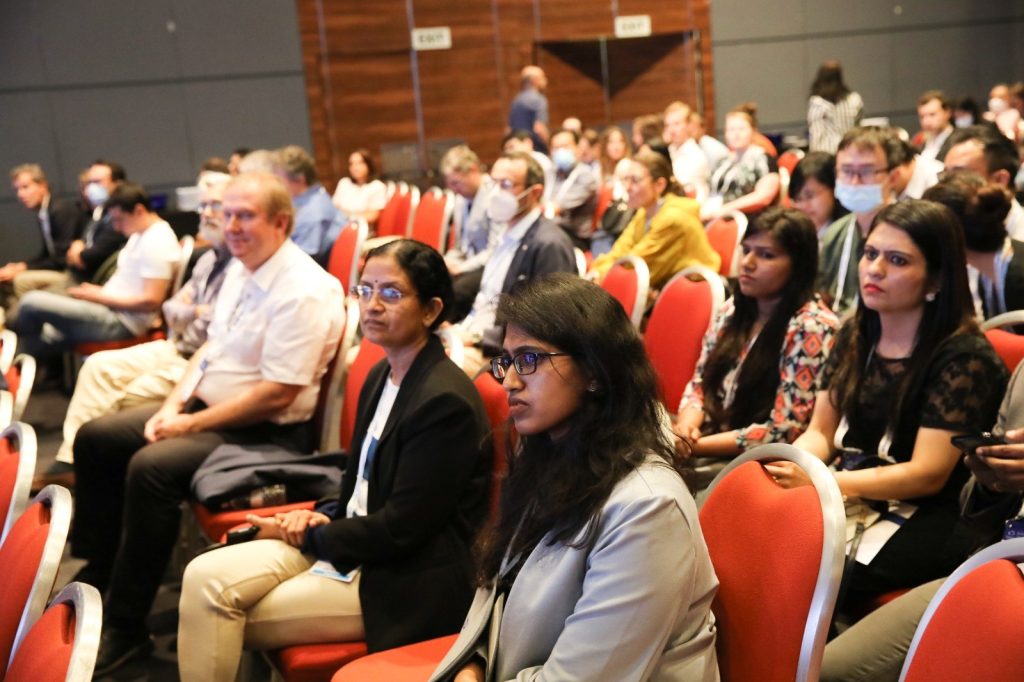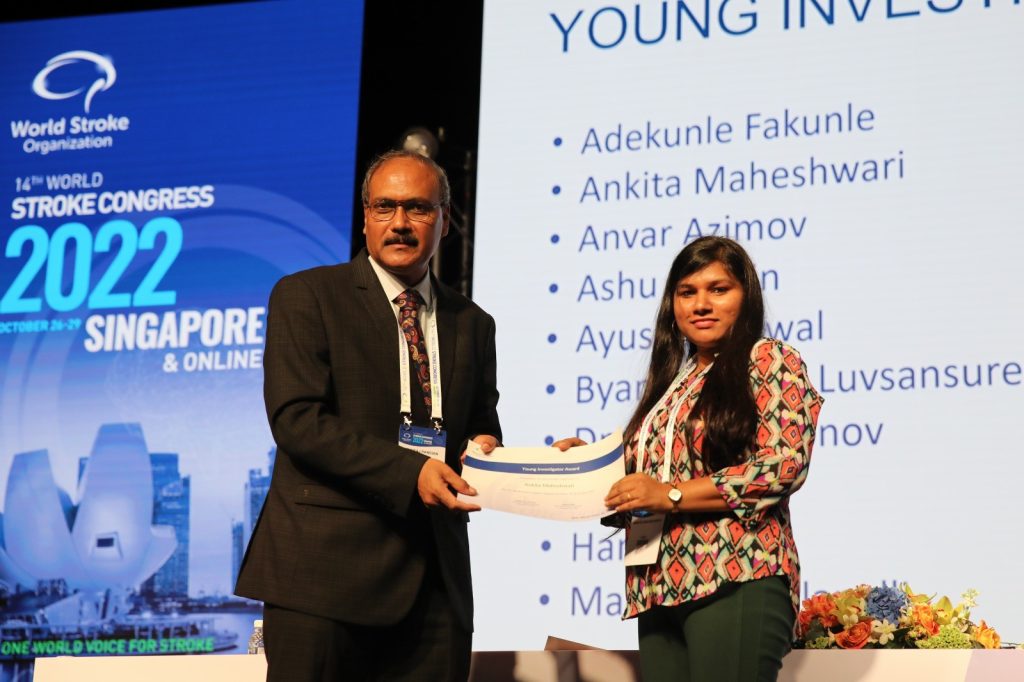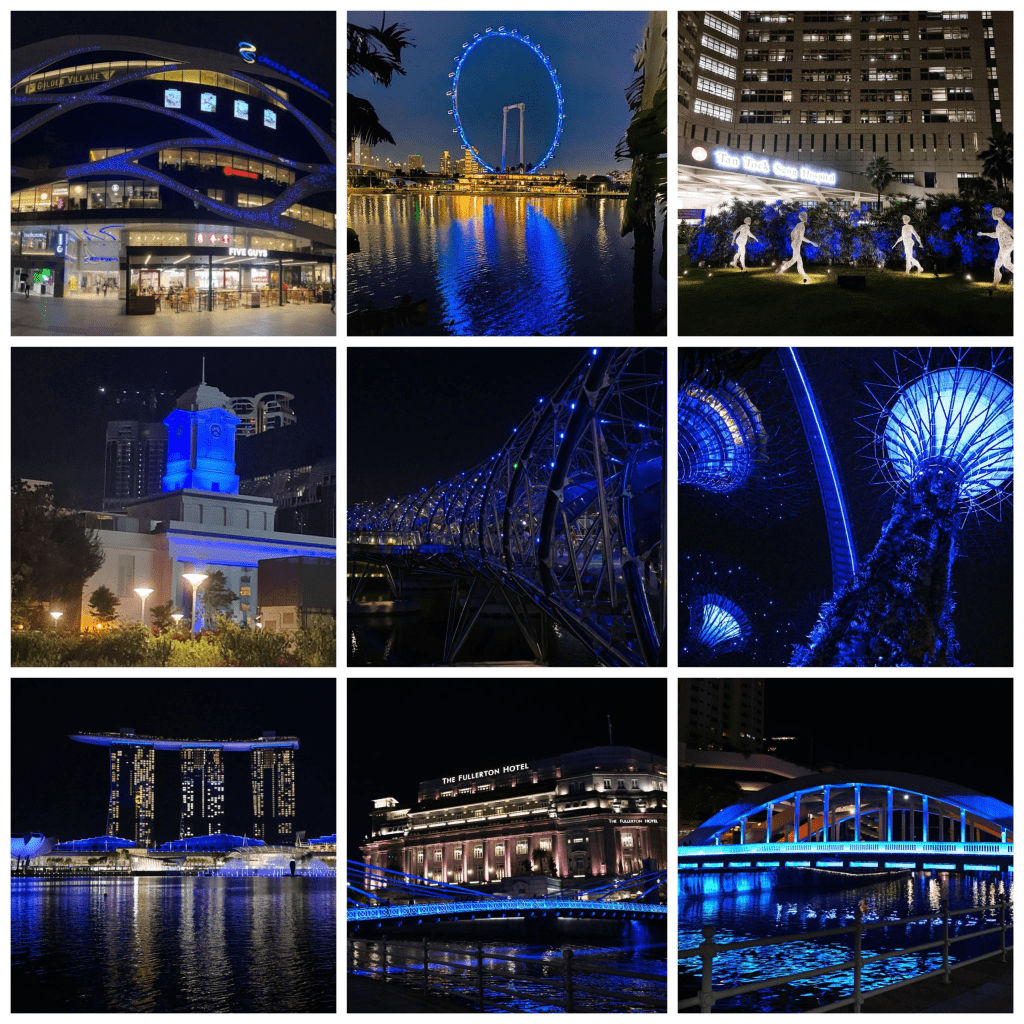Daily Summaries






World Stroke Congress Daily Summary
26th October 2022

The 2022 World Stroke Congress opened in Singapore on 26th Oct. With over 4200 delegates from 104 countries, about half in person and the other half joining virtually, it is truly a global meeting.
Opening Ceremony Highlights
The Director-General of the World Health Organization, Tedros Adhanom Ghebreyesus, provided a video address to Congress delegates, commenting that stroke is a perfect example of the need for countries to make a paradigm shift towards promoting health and preventing disease by addressing its root causes. He followed by mentioning that, “The world needs your voices as advocates for preventing cardiovascular disease through healthier environments and reduced health inequities along with improving access to rehabilitation services.”
Guest-of-honour, Prof Tan Chorh Chuan, Chief Health Scientist and Executive Director, Office of Healthcare Transformation, Ministry of Health, Singapore said in his opening remarks, “Stroke can be prevented and indeed the World Stroke Organization has a vision of life free from stroke. In fact, four out of five strokes are preventable through early diagnosis and treatment of the risk factors.”
Late Breaking Trial Presentations
There were four late breaking trial presentations at the first Plenary session. Results of the Treatment Evaluation of acute stroke using regenerative cells (TREASURE) clinic trial showed that the primary and secondary endpoints were not significant in between Multistem treatment and placebo. In a post-hoc analysis presented, the rate of independent life after 1 year as measured by the global stroke recovery was possible for 27% of the treatment group vs 15% of the control, providing evidence that stem cell treatment may a possible stroke treatment strategy.
Early rhythm control therapy for atrial fibrillation (AF) within 12 months in patients with history of stroke was shown to lower recurrent stroke risk of 3.7 primary outcome events/100 person-years vs 7.4 in the usual care group with a HR of 0.52 (95% CI 0.29 – 0.93) in the EAST-AFNET 4 subgroup analysis trial. This is a game changer in the prevention of recurrent stroke in these AF patients.
Two factor XIa inhibitor trials (AXIOMATIC-SSP and PACIFIC-STROKE) showed that the class of drugs may provide additional benefit stroke patients for recurrent vascular event reduction. Prof Graeme Hankey, from the University of Western Australia commented, “The AXIOMATIC-SSP and PACIFIC-Stroke are phase 2b randomized, placebo-controlled trials of a range of doses of oral small molecule inhibitors of Factor XIa, milvexian and asundexian respectively, added to standard of care antiplatelet therapy within 48 hours of acute non-cardioembolic, minor ischaemic stroke and continued to 3-6 months. They found that there was no significant dose-response of the FXIa inhibitors for the primary efficacy outcome of the composite of clinically symptomatic ischaemic stroke and incident MRI-detected covert brain infarction at 3-6 months, and no significant increase or dose response or primary safety outcome of major bleeding. However, secondary and post-hoc analyses identified a numerically lower incidence of clinically symptomatic ischaemic stroke and TIA by about one third compared to placebo with milvexian doses between 25 mg bid and 100 mg bid and asundexian doses of 50 mg per day. These data support the study hypotheses that Factor XIa inhibition may reduce thrombotic clinical ischaemic events without compromising haemostasis, and to further test the hypothesis in adequately powered phase 3 trials in substantially larger and broader patient populations.”
Joint Session on Stroke Rehabilitation
The joint session with the International Stroke Recovery and Rehabilitation Alliance (ISRRA) discussed the global implementation of stroke rehabilitation. Co-moderator of the session, Prof Sean Savitz from the University of Texas commented, “It was amazing to see such a multidisciplinary group of professionals that attended the conference and we even had patient representation at the meeting. Colleagues from across the globe shared their expertise surmounting barriers and delivering rehabilitation care to stroke survivors in low income countries.”
Kind regards,
WSO Technical Secretariat
Daily summary of Day 2 of WSC 2022
27th October 2022

WSO Presidential Award
The prestigious WSO Presidential Award was presented to Prof Yongjun Wang. During this lecture, entitled “CHANCE to reduce residual recurrent risk of ischemic cerebrovascular events” he commented on how the CHANCE trial with dual anti-platelet therapy of aspirin and Clopidogrel allowed a residual recurrent stroke risk of 8.2% vs 11.7% with aspirin monotherapy. CHANCE-2 trial that looked at genotype guided dual-antiplatelet therapy reduced that risk to 6.0%. On the horizon is CHANCE-3 which will look at Colchicine on reducing the 90-days risk of any new stroke in high-risk patients with existing acute ischemic strokes/TIAs.”
Prof Michael Brainin was presented with the WSO Leadership Award and during his address he highlighted the “urgent need to improve primary prevention of stroke and cardiovascular disease. If management of relevant cardiovascular risk factors can be done, more strokes can be prevented. There is a huge potential in reducing the risk factors of stroke which can influence the future of stroke burden around the world. Community interventions, e-health and polypill are important pillars for primary prevention of stroke. These tools can influence and a difference and prevent stroke and dementia. WSO is well-equipped to go on to battle the prevention ask and see the future decrease of incident of stroke throughout the world.”
Late Breaking Trials
There were 5 studies presented at the late breaking trial session. Prof Bruce Campbell from the University of Melbourne reflected on the tenecteplase trials presented saying, “Two studies presented in the late-breaking plenary session today examined the effect of tenecteplase versus alteplase for patients with large vessel occlusion. In a sub-analysis of the AcT trial, tenecteplase had similar rates of favorable functional outcome and reperfusion prior to thrombectomy. In a pooled analysis of EXTEND-IA TNK and Australian statewide registry data, tenecteplase demonstrated increased rates of reperfusion prior to thrombectomy compared to alteplase across a spectrum of time from lytic to angiography up to 4 hours. Patients who achieved reperfusion prior to thrombectomy had improved functional outcomes compared to those who achieved reperfusion after thrombectomy. In question time, the differences in time from lytic administration to angiography between the two studies were thought likely to be contributing to the difference in results as AcT almost exclusively included patients presenting to comprehensive stroke centers with rapid workflow from lytic to arterial access, whereas the Australian data included patients transferred between hospitals.”
The MR CLEAN late trial studied the efficacy and safety that endovascular treatment (EVT) for acute ischemic stroke in the anterior circulation 6-24h after symptom onset or last seen well. There was a 1.7 times higher chance for better functional outcome for patients who had collateral flow seen on imaging treated with EVT.
Prof Wim van Zwam from Maastricht University Medical Centre, Netherlands who is part of the MR CLEAN LATE team said after the presentation, “The MR CLEAN-LATE showed clear benefit for patients treated with EVT beyond the 6-hour time window when selected on presence of collaterals only. This will open up these treatments in centres currently not able to perform CT perfusion (CTP), will expand the indication beyond CTP and may speed up decision making in centres currently using core and penumbra thresholds.”
Pooled analyses of Individual patient data of 6 randomized clinic trials that compared direct mechanical thrombectomy (MT) against bridging with intravenous thrombolysis (IVT) found that direct MT is not non-inferior to IVT + MT at a 5% margin. IVT prior to MT is associated with a higher chance of successful reperfusion at the cost of a higher chance of any intracranial hemorrhage.
In the prospective multi-center Excellent registry, 46.8% of patients achieved good clinical outcome with Embotrap as the first-line device. Evaluation of clot composition showed that the percentage RBC and platelet content were strong predictors of clinical and recanalization outcomes.
Program Highlights
The WHO Implementation Taskforce was introduced in a session on improving access to quality stroke care. Dr Taskeen Khan spoke on the WHO HEARTS initiative saying, “HEARTS has demonstrated feasibility and effectiveness in managing hypertension in primary healthcare which will reduce morbidity and mortality from stroke and ischaemic heart disease – the world’s biggest killers.”
With the World Stroke Congress being held in Southeast Asia for the first time, there was a spotlight session discussing stroke care in the region as part of the legacy of WSC 2022. Scientific co-chair Prof Deidre De Silva commented, “Southeast Asia is a hotspot for stroke with one of the highest stroke incidence, and the region is committed to work together to improve care of our stroke patients.”
The evening ended with the faculty dinner at the Clifford Pier restaurant, a gesture of appreciation to the faculty for their contributions to WSC 2022.
Kind regards,
WSC 2022 Scientific Programme Committee
Daily summary of Day 3 of WSC 2022
28th October 2022
Awards for contributions to clinical stroke research
At the plenary session today, the award for contributions to clinical stroke research was presented to Prof Bruce Campbell who said in his lecture that, “CT perfusion has helped to assist in accurate diagnosis of stroke vs mimics, as well as recognize treatment targets for IVT and EVT in any time window. CTP allows for the most generalizable approach to understanding the likely benefit of reperfusion in the individual patient.”
The award for Contribution to Stroke Services was presented to Prof Bo Norrving who said that, “One of the most memorable memories during his tenure as WSO President was to create a leadership structure that had an atmosphere of trust and mutual understanding between different people. This openness of mind is one of the keys to the success of the organization. Now the emphasis is focused not only to have scientific advances available but to put them into implementation.”
Late-breaking trials
In the late breaking trial presentations, the Second Enhanced Control of Hypertension and Thrombectomy Stroke Study (ENCHANTED2) trial which was a multicentre prospective label RCT showed that intensive blood pressure control (SBP < 120mmHg) in patients undergoing mechanical thrombectomy led to adverse effects, with a higher likelihood of poor functional outcome on modified Rankin scale (common OR 1.37 (97% CI 1.07-1.76)) and more early neurological deterioration (common OR 1.53 (95% CI 1.18-1.97),) compared to control arm (target 140-180 mm Hg)
Professor Craig Anderson, PrincipaI Investigator of the study and Director of Global Brain Health at The George Institute for Global Health concluded that, “While our study has now shown intensive blood pressure control to a systolic target of less than 120 mm Hg to be harmful, the optimal level of control is yet to be defined.”
The Dual Thrombolytic Therapy with Mutant Pro-Urokinase and Small Bolus Alteplase for Ischemic Stroke (DUMAS) trial found that dual thrombolysis therapy with pro-urokinase and alteplase, showed a comparative low rate of ICH (14% alteplase alone vs 13% m-proUK). In a cohort of over 450,000 UK Biobank participants, pathogenic variants in NOTCH3, HTRA1 and COL4A1/2 are more common than expected in the general population. These variants are associated with stroke and dementia. Interestingly, cardiovascular risk burden influences the penetrance of such variants.
Joint Session
A/Prof Christopher Chen was co-moderator of the joint session with the International Society of Vascular Behavioural and Cognitive Disorders (VascCog) said that “This joint session provided important updates on the important issue of post-stroke cognitive impairment and dementia including what have we learned from previous studies, what new studies will reveal and how should we perform better clinical trials globally for the treatment and prevention of vascular cognitive impairment.”
The role of nurses in prevention and patient advocacy
The breadth of nursing was discussed at one of the teaching courses and co-moderator, Dr Ng Wai May from the National Neuroscience Institute, Singapore commented that “It is essential to address care gaps and optimize secondary stroke prevention. Nurses play an important role as advocates to empower patient and family members to self-manage using health apps. Advocacy should be at strategic, organizational and individual levels.” Mr Terrence Ang from Singapore, shared his journey as a stroke survivor and describing how he went from hating nurses to really appreciating them. It was truly inspiring, to be inspired yourself, please click on this link to watch the video.
Kind regards,
WSC 2022 Scientific Programme Committee
Daily summary of Day 4 of WSC 2022
29th October 2022
The Barbro Johansson Award was presented to Prof Julie Bernhardt. During her lecture titled ‘Making waves in stroke rehabilitation & recovery’, she commented, “On the important of recognizing knowledge gaps and opportunities to change the landscape through collaborations. We must take a systematic approach to gain knowledge by understanding our values and building a network of people who supports and help each other.” Prof Julie also spoke about “Recovery research needing a multi-disciplinary team (MDT) of researchers – including patient voices. We also need therapists, nurses to have a pathway to PhD and there onwards to more clinical research positions.”
At the late breaking trial session, a systematic review and global meta-analysis of arterial stiffness involving half a million participants found that Pulse Wave Velocity (PWV) distributions depended non-linearly on age, sex and country. Males had higher PWVs than females but sex differences decreased with age.
The association of intraventricular fibrinolysis with clinical outcomes in patients with intracerebral haemorrhage was reported in a meta-analysis and found that compared to standard of care, Intraventricular fibrinolysis (IVF) resulted in improved functional outcome (mRS 0-3) at 6 months. It also resulted in reduced mortality at 6 months and did not increase adverse events within 30 days. Treatment effect was linked to an early window (<48 hours) specifying a target population for future trials.
A randomized Phase 3 multicenter trial found that Sovateltide (a highly selective Endothelin-B receptor agonist which promotes neuroregeneration) administered to patients within 24 hours of acute cerebral ischemic stroke resulted in statistically significant improved outcomes in terms of its primary outcome of ordinal shift in the mRS. These results are pioneering as it offers a new possible acute stroke treatment strategy, and further studies are being planned.
In a pre-planned post-hoc analysis of the RESILIENT trial (which compared stent-retriever and/or thromboaspiration vs Best Medical Therapy for stroke due to large vessel occlusion), patients treated in the randomization phase did not have a better outcome in 90 days when compared to the roll-in phase patients. The two likely reasons for the main finding, as discussed during the Q&A were the strong effect of endovascular treatment and the good training before and during the roll-in period.
There was a joint session with the Asia Pacific Stroke organization and their President-elect Prof NV Ramani who is also on the WSC local organizing committee said, “The speakers excellently highlighted issues unique to Asia, including stroke mechanisms, treatment and challenges in providing adequate stroke care in the very diverse environments, with further stresses posed by the COVID-19 pandemic.”
The final day of the congress fell on 29th October. There were many events held across the global to commemorate World Stroke Day, including lighting up of buildings and landmarks. Here are photos of some of the light up in Singapore.
We are very pleased to report that there were over 4400 delegates in person and virtually, at the World Stroke Congress 2022. Thank you for being part of this conference and we look forward to seeing you at the 2023 congress in Toronto.
** Special thanks to Dr Christopher Seet from the National Neuroscience Institute in Singapore for his contributions to the daily summaries for WSC 2022.
Kind regards,
WSC 2022 Scientific Programme Committee

